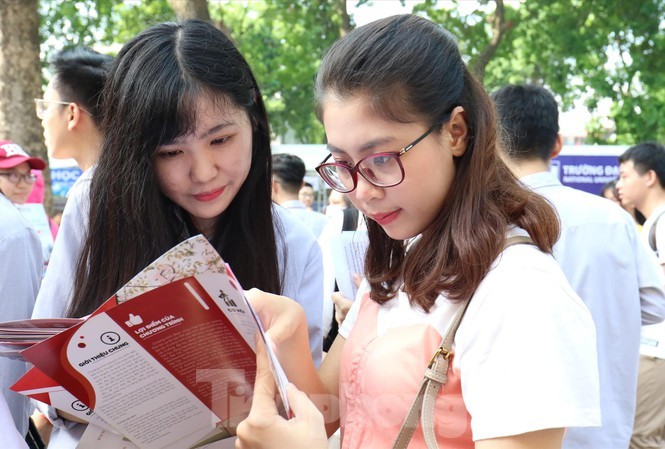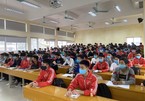Most higher education establishments run many different training modes, including high-quality training programs.

In the past, in-service training was the major source of income of universities. But now, it is high-quality programs, advanced training programs and programs taught in English which are the ‘rice pots’ of the schools.
Universities began running high-quality programs in 2014 which were introduced as aiming to improve the competitiveness of Vietnamese students in the regional labor market.
State-owned universities were happy that MOET allowed enrollment of students for high-quality training programs. This is because they cannot set high tuition levels for full-time mass training programs (the tuitions set by schools must not be higher than the ceiling set by the State). Meanwhile, they can do this with high-quality training programs.
| The State Audit, when working with the Ministry of Education and Training (MOET), named a number of schools which enroll students of low quality for high-quality training programs. |
That is why all schools run high-quality training programs and other programs to ‘satisfy diverse demands in society’.
H.A.N, a third-year student at the Foreign Trade University, said the tuition of the high-quality training program at the school is twice as much as the tuition for mass training. N has to pay VND890,000 per credit.
N admitted that the classes belonging to the high-quality program have better conditions than mass training program. There are 60 students in each class instead of 120-180 students. Lessons are taught in English, except for some learning subjects. Around 20-30 perccent of lecturers are foreign.
According to N, the content of the high-quality training program is not much different from the program for mass training. The biggest difference is the language used in teaching. As high-quality program’s students learn in English, they seem to have advantages when seeking jobs.
The ‘higher quality’, according to N, means better learning conditions, air conditioners in classes and more thoroughly selected lecturers.
At the HCM City Industry University, students of high-quality training programs were also taught in English in previous years. However, the students of the recent training courses study in Vietnamese.
The school explained that some students find it difficult to study in English because of their limited English skills. Therefore, the school decided that lecturers speak in Vietnamese and show major points of the lectures on overhead projector in English.
Besides, the school also decided to provide 10 more credits in English to improve English skills.
The quality of high-quality training programs remains questionable. No school in the country could be found setting higher requirements on input students for high-training programs. At some schools, the students following high-quality programs have lower exam scores than the students of mass training programs.
Mai Lan

E-learning to become part of higher education
Universities have had to provide lectures online as a temporary solution during the COVID-19 pandemic, but experts believe that e-learning will become an indispensable part of higher education in Vietnam.

Big money poured into higher education sector
Nguyen Hoang Group has become well known as the biggest private investor in the education sector.
 The State Audit, when working with the Ministry of Education and Training (MOET), named a number of schools which enroll students of low quality for high-quality training programs.
The State Audit, when working with the Ministry of Education and Training (MOET), named a number of schools which enroll students of low quality for high-quality training programs.